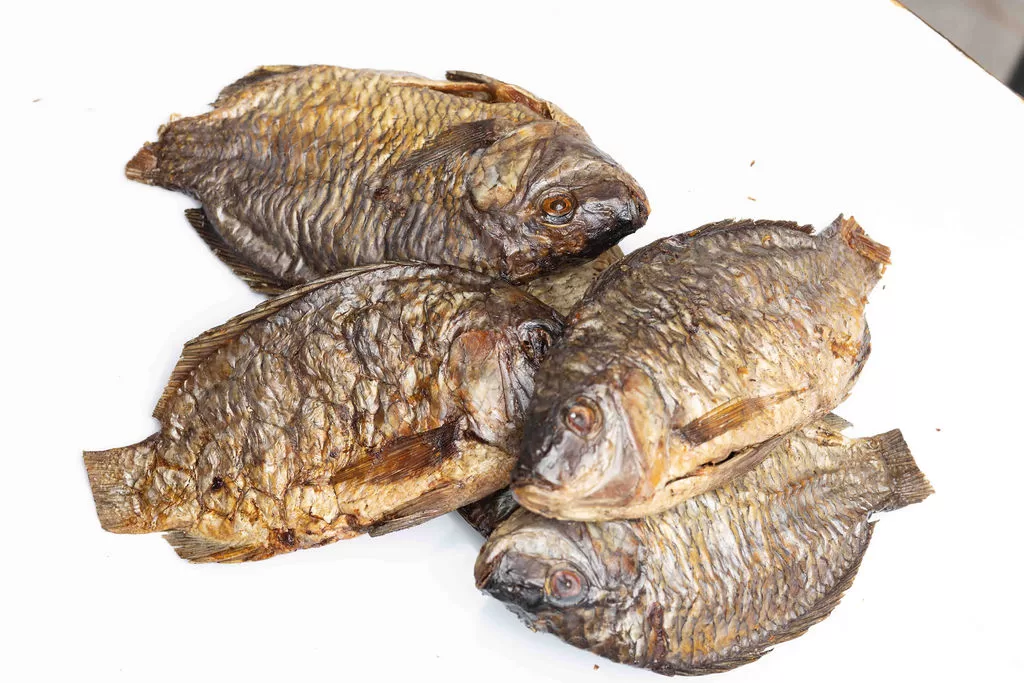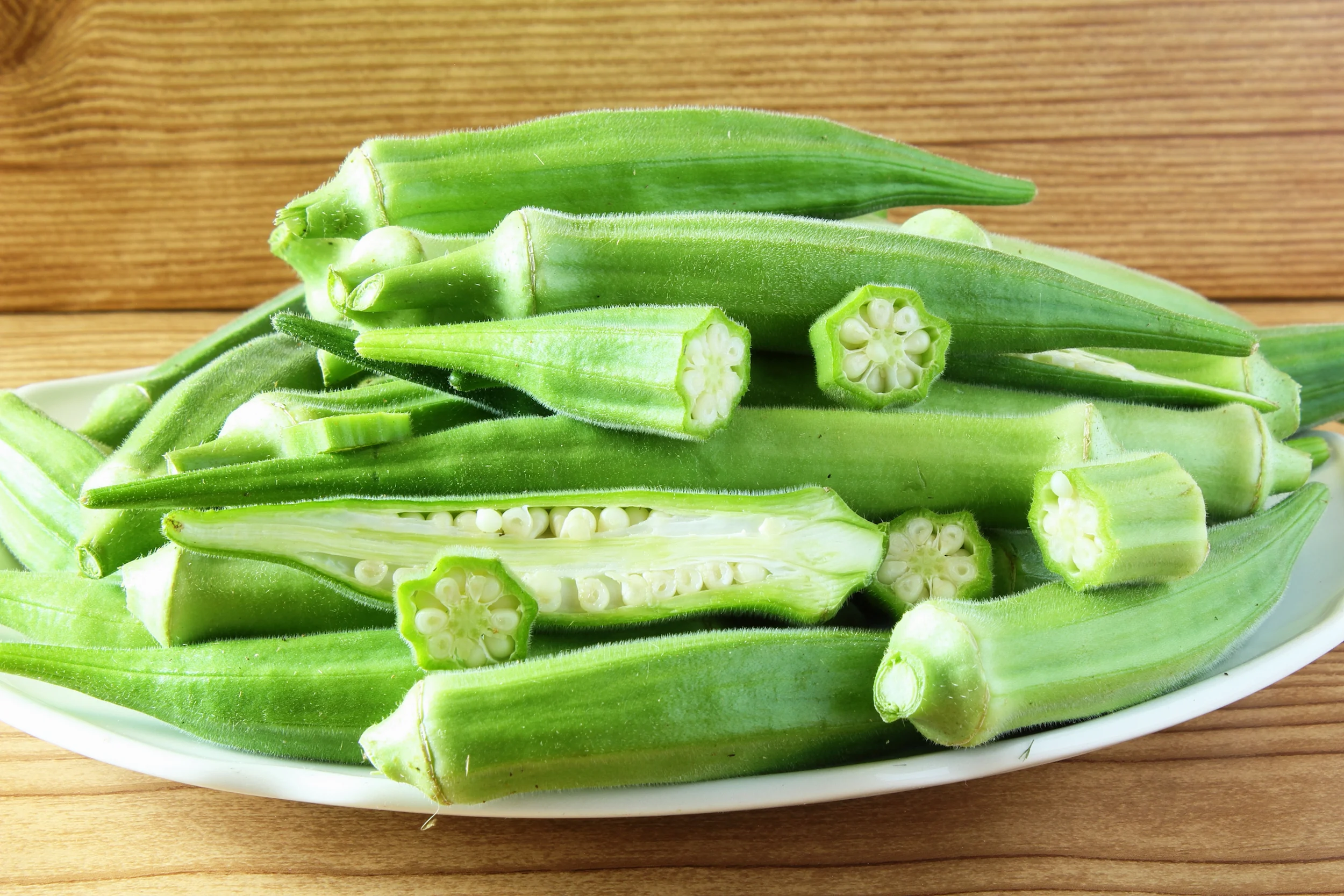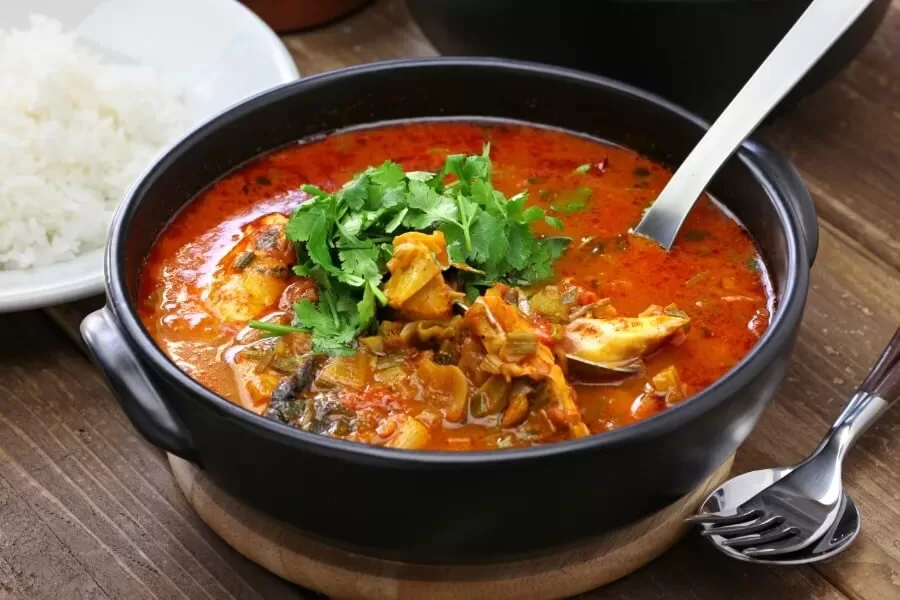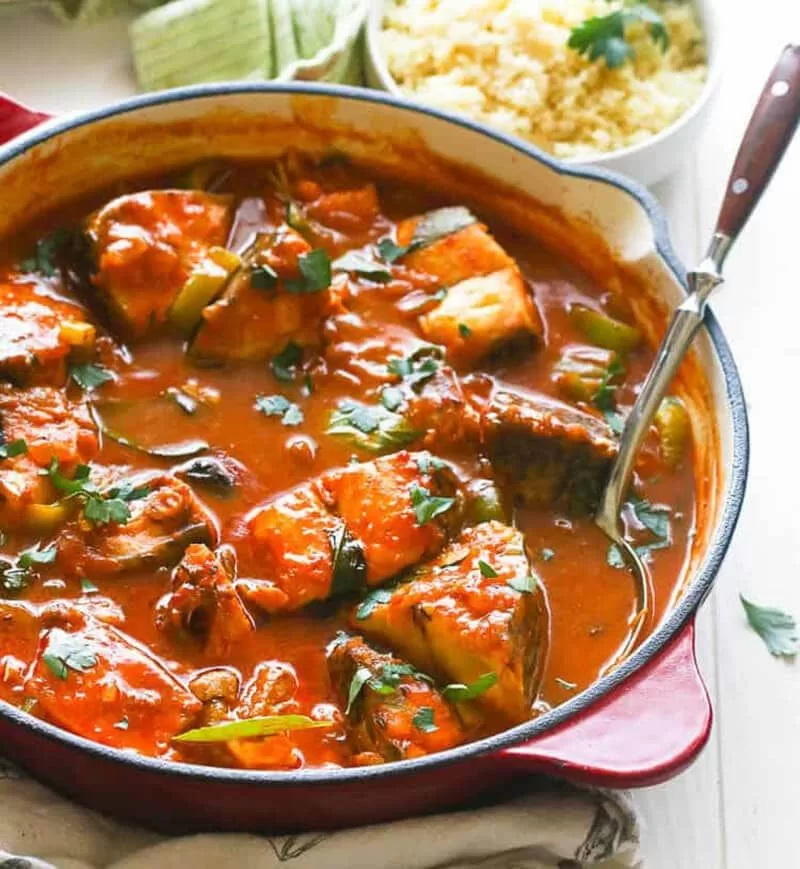South Sudan’s rich culinary traditions often remain undiscovered. One dish that stands out from this relatively unexplored cuisine is Kajaik – a hearty fish stew, brimming with authentic flavours and a fascinating history. As one of South Sudan’s signature dishes, Kajaik is a staple in the diets of communities living along the White Nile, where fishing is a vital way of life.
History of Kajaik
Kajaik, a popular dish among the Dinka, Nuer, and Shilluk tribes, has its roots in the fishing culture along the Nile. The name “Kajaik” is derived from local dialects, with some interpretations suggesting it means “to cook with water.” Historically, fishing was not only a means of survival but also an integral part of the cultural identity of these communities. Freshwater fish from the Nile, such as tilapia and catfish, are the heroes of this dish, symbolising the region’s deep connection to its natural environment.
Traditionally, it is prepared in large batches for communal gatherings, where family and friends come together. Whether it’s a celebration, a funeral, or a simple family meal, Kajaik connects people to their roots and to one another.
The Unique Flavour of Kajaik
Kajaik has a distinct yet comforting taste, shaped by the simplicity of its ingredients and the creativity of its preparation. The fish is often dried in the sun or smoked over an open fire, imparting a deep, smoky flavour to the stew. While the fish remains the central element, the dish is made complete with okra, leafy greens, and a range of spices. Ingredients like onions, garlic, and groundnut (peanut) paste add layers of flavour to the broth, creating a delicate balance between the earthiness of vegetables and the richness of the fish.
In some regions, Kajaik is made with fermented sorghum paste or flour, thickening the broth and giving it a tangy undertone. This variation reflects the versatility of South Sudanese cuisine, where simple elements are transformed into complex, flavourful dishes.
The Recipe: Traditional Kajaik
Here’s a simple yet authentic recipe to make Kajaik at home. This version uses smoked tilapia for an authentic taste, but you can experiment with fresh fish if smoked isn’t available.

 Ingredients:
Ingredients:
- 500g smoked tilapia (or any freshwater fish)
- 2 tablespoons groundnut (peanut) paste
- 1 cup fresh okra, sliced
- 2 medium onions, chopped
- 3 cloves garlic, minced
- 1 tablespoon vegetable oil
- 1 teaspoon smoked paprika (optional, for added smokiness)
- 1 cup leafy greens (e.g., spinach or kale)
- Salt and pepper, to taste
- 1.5 litres water or fish stock
- Lemon juice, to serve
Instructions:
- Prepare the Fish: If using dried or smoked fish, soak it in warm water for about 30 minutes to rehydrate and soften. Drain and set aside. If using fresh fish, clean and cut it into pieces.
- Cook the Vegetables: In a large pot, heat the vegetable oil over medium heat. Add the chopped onions and cook until they become translucent. Add the minced garlic and stir until fragrant.
- Add the Okra and Groundnut Paste: Toss in the sliced okra and stir well. Let it cook for 2-3 minutes until slightly softened. Add the groundnut paste and smoked paprika (if using). Stir until the ingredients are combined.
- Add the Fish and Broth: Pour in the water or fish stock and bring it to a boil. Add the fish pieces and reduce the heat to a simmer. Let it cook gently for 20-25 minutes, allowing the flavours to meld.
- Add Leafy Greens: Add the leafy greens and cook for another 5 minutes, just until they wilt. Season the stew with salt and pepper to taste.
- Serve: Ladle the hot Kajaik into bowls and finish with a squeeze of lemon juice and/or coriander for a fresh touch. Traditionally, Kajaik is served with kisra (a sorghum flatbread) or steamed white rice.

For South Sudanese people living in the diaspora, cooking Kajaik is a way of preserving their heritage and staying connected to home. This dish not only provides nourishment but also evokes memories of family gatherings and riverside meals.
So why not gather your ingredients and give Kajaik a try? You might just find that it’s more than a dish – it’s an experience steeped in history and tradition.


